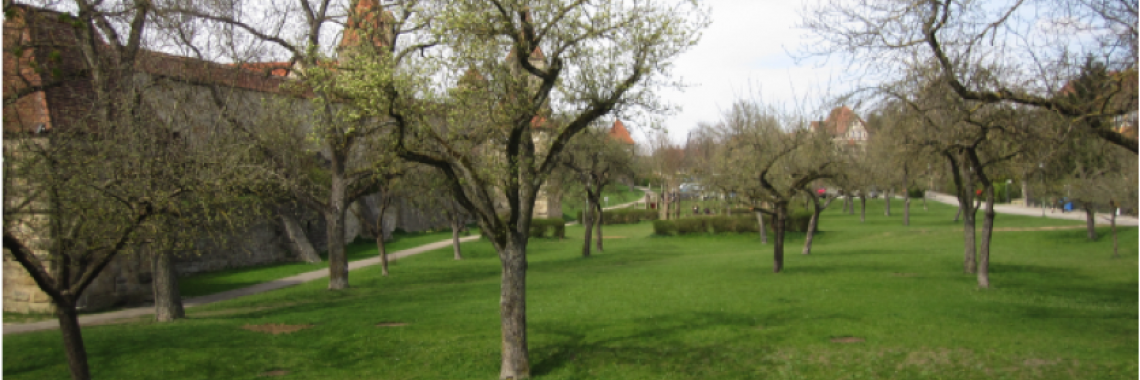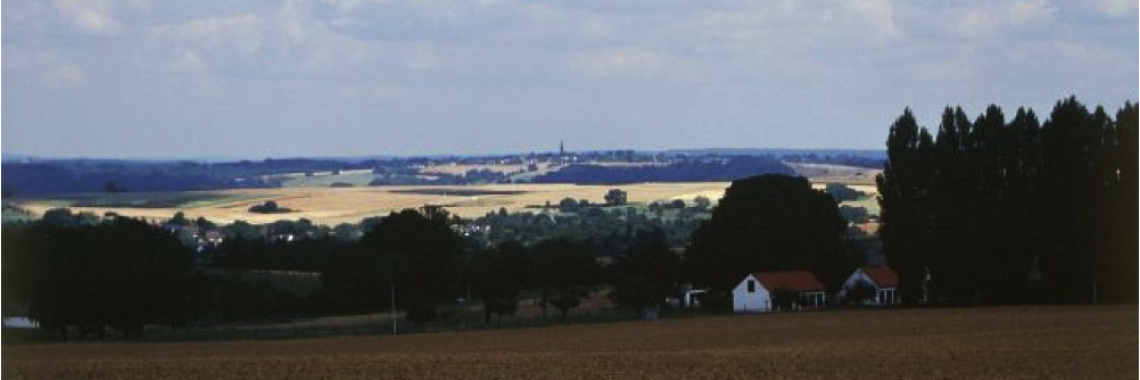Wooded grasslands in Germany
27.09.2017, by Bénédicte Gaillard
Research: Alexandra Kruse, Michael Roth, Johannes Dreer; upload: Bénédicte Gaillard: The entries are still in process
Since stone age is known that people have eaten fruits.
highest importance in Germany: 19th and 20th cent.
Example Brandenburg: promotion by the Cistercian monks in the 13th cent. New influences and cultivars by the Hugenots in 16-17th cent. 18th -19th cent. kings promoted fruit trees (KRUSE 1999, p. 186ff)
Occurs everywhere in Germany, but high density e.g. in Southern Germany, and in many local, hilly areas with low intensity farming close to farms (backyards), at the fringes of rural settlements.
Bünger, Lydia, Doris Kölbach: Streuobst – Bindeglied zwischen Naturschutz und Landwirtschaft, Hrsg. Bundesamt für Naturschutz 1995, Dokumentation Natur und Landschaft, Bibliographie Nr. 69, 168
Grill, Dieter & Herbert Keppel: Alte Apfel- und Birnensorten für den Streuobstbau, Leopold Stocker Verlag, Graz 2005. ISBN 3-7020-1087-4
S.Hänggi, Hänggi, Edi Stöckli & Wolfgang Nentwig: Lebensräume Mitteleuropäischer Spinnen, Miscellanea Faunistica Helvetiae. Centre suisse de cartographie de la faune, Neuchatel 1995. ISBN 2-88414-008-5
Hartmann, Walter: Farbatlas Alte Obstsorten, Ulmer, Stuttgart 2000, 2004 (2. Aufl.). ISBN 3-8001-3173-0
Mader, Hans-Joachim: Die Tierwelt der Obstwiesen und intensiv bewirtschafteten Obstplantagen im quantitativen Vergleich in: Natur u. Landschaft, Kohlhammer, Stuttgart 1982,11, 371-377. ISSN 0028-0615
There are different data bases: partly regionally
not too poor, Glatthaferwiesen special soil condition (substrate)
altitude < 800
moderate climate
moderate hydrology
flat to very steep slope
South Aspect
They are still in use, after decrease in use and diffusion, extent is increasing today
Use of the grassland: twice a year: grazing bears risks (esp. for the roots by lying and walking) and advantages (fertilizer); attention with goats and horses,
They are threatened because of a change in production, land use, infrastructure measures, choice towards half standard trees, or even quarter standard trees or espalier trees
They are perceived as threatened by the German ministry for nature (Red List of Biotop types) conservation; experts and scientists, NGOs, also in several federal states it is listed as a protected biotope, e.g. Saxony.
grazing (hay making), bee keeping
apples, fruit juice, honey
extensive grazing: ponies, horses, cattle, sheep; bee keeping
ecological functions for plants and animals, biotope network / habitat (many diff. animal groups)
aesthetic values at the fringe of rural settlements, especially in spring (flowering aspect). Many festivities relating to fruit trees flowering (e.g. Werder, Brandenburg).
The Streuobstwiese has a high importance, ecologically and for regional identity. Very well known, but nevertheless important decrease since the 1950ies because of the “industrialization” of farming. A second reason for the loss of Streuobstwiesen is their location at the fringe of rural settlements, a favoured place for the development of new residential estates. As many rural settlements, especially in Western Germany have been growing massively since the 1950s, many Streuobstwiesen have been cut down for new building land. Many initiatives – local, regional, national in order to protect and to re-invest in “Streuobstwiesen”high standard trees (vers. low or half standard trees)many different cultivars and types
mixed use of fruit productions and (grass) haymaking and/or pasturing
combined with beekeeping
2. Type
grazed land, wet, close to floating water: Ash tree, wych elm, aspen, goat willow, small-leaved lime, oak and birch: Trees often in a row/ line
3. Type
Very little “forests” (Gehölz) within (in the middle) of grazed land, different species, often combined with wild fruit trees, with or without water in the middle










